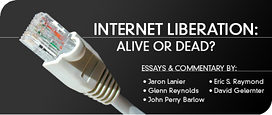Here’s where the Net is going, as far as I can see. The world is moving to an “Empty Computer” model of computation. In the Empty Computer world, all my digital assets (all my docs, apps, images, videos, soundtracks, mail mssgs etc) are stored in my personal data structure, afloat in the Cybersphere. I can access my personal structure from any net-connected computer in the world (obviously, modulo security checks).
Today’s computing model is a dead end, and we’re near the end of this road. People have more and more computers and quasi-computers (cell phones, iPods, etc.) in their lives. For many people, the management problem was already verging on impossible five years ago. It’s increasingly hard to remember where a file (or the latest version of a file) is stored. And, as desktop PCs get cheaper and more capable, installing a new one becomes more and more of a pain. Whatever method I choose, it takes far too long to move all the stuff I need to the new machine. And even though storage is dirt cheap, I always wind up leaving lots of stuff behind, because it’s too much of a nuisance to move it all. (Over the last few months there have been several announcements of new apps designed to synch up your files over all your various machines. One thing we know for sure: these are going nowhere. No one is going to buy them. This is exactly the kind of systems app most people hate to have anything to do with.)
Under the Empty Computer model, I buy a new computer, plug it in and my whole digital world is available on the machine as soon as I connect to the net. I can smash up my old machine with a sledgehammer and feed it to the dog; it doesn’t matter. All my digital assets are afloat in my personal data structure on the net, available to me automatically on every computer everywhere–on computers in phonebooths, supermarkets, planes, airports, classrooms, my office, etc. I log on and identify myself and there’s my stuff. Computers become viewing devices for tuning in personal data structures (which are floating out there in the cyber-cosmos like Venus).
The Net will provide distributed, reliable, fungible storage for these floating personal data structures. What will the structures look like? I claim they’ll look like “lifestreams,” the electronic timeline-journals we first implemented in the mid ’90s (everything fully indexed; with a past, present and future; the stream begins with your birth certificate). Lifestreams have various good characteristics, and people can learn how to work them in three minutes or less. (No one is willing to spend more nowadays.) But, whether or not the all-inclusive personal structure of choice turns out to be a lifestream or something else, the Empty Computer model is the way we’re going. And the Net’s future is to get us there.

